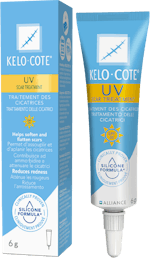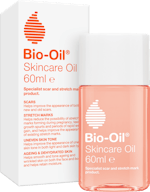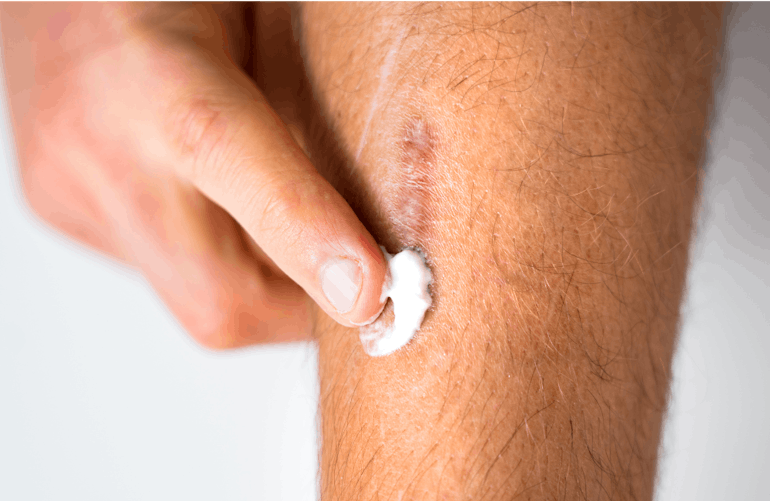Read our editorial policy to see how we create informative, accurate content.
The Science Behind Scar Creams
Reviewed and fact-checked by Alessandro Grenci, Superintendent Pharmacist. Read our editorial policy to see how we create informative, accurate content.
Scars and Their Causes
Scars can have a significant impact on individuals, affecting their self-esteem and confidence. They can result from various causes, such as injuries, surgeries, or skin conditions like acne. Over the years, there has been a rise in the popularity of scar creams in the market, which aim to reduce the appearance of scars and improve skin texture.
Importance of Scar Creams in Reducing the Appearance of Scars
Scar creams often contain various active ingredients, such as silicone, vitamin E, and vitamin C, which have been shown to be effective in reducing the appearance of scars.
In this article, we will explore the science behind scar creams and how they work to improve the appearance of scars. We will also discuss the different types of scars and the effectiveness of various scar cream ingredients.
How Scars Form & The Body's Natural Healing Process
Scars are a natural part of the body's healing process and form when the dermis (deep, thick layer of skin) is damaged. The body produces new collagen fibres (a naturally occurring protein) to mend the damage, resulting in a scar. The new scar tissue will have a different texture and quality than the surrounding tissue. There are four different types of scars.
Different types of scars: Fine-line, Atrophic, Keloid, Hypertrophic.
Scars can vary in appearance and texture, depending on several factors, including the type of injury and the individual's skin type. Some of the common types of scars include:
Fine-line scars: These are minor wounds that usually heal to leave a raised line, which gradually fades and flattens over time.
Atrophic scars: These scars have a sunken or pitted appearance and can develop as a result of an injury that causes a loss of underlying fat.
Keloid scars: These are thick, rounded, irregular clusters of scar tissue that grow at the site of a wound on the skin but beyond the edges of the wound. They often appear red or darker in colour compared to the surrounding skin.
Hypertrophic scars: These scars have a raised appearance relative to the surrounding skin and are generally formed along the edge of the wound. They are often red, itchy, and may become inflamed.
How Scar Creams Work
Scar creams work in different ways to heal the tissue and reduce the appearance of scars. Scar creams primarily work by:
- Moisturizing the upper layer of skin, which helps to hydrate the cells and give them a fuller look, potentially reducing the appearance of scars.
- Providing a protective barrier and trapping in moisture, which can help to reduce inflammation and promote skin cell renewal.
- Helping cells in the connective tissue below the scar regenerate, which can improve the overall appearance of the scar.
Key Ingredients in Scar Creams That Help in Scar Healing
When choosing a scar cream, it's essential to know what's inside. The effectiveness of a scar cream largely depends on its ingredients. Here are some of the key components you might find:
- Silicone: A popular ingredient that helps in reducing the appearance of minor scars. Reducing collagen overgrowth and resulting in flatter scars. This ingredient works by reducing collagen overgrowth, resulting in flatter scars. It also helps to hydrate the tissue, further reducing the appearance of scars and their redness. While also shielding the scar from external factors, like dirt and bacteria.
- Epigallocatechen-gallate (EGCG): An antioxidant found in green tea, EGCG has shown potential in aiding wound healing.
- Onion extract: This ingredient has antioxidant properties and is used in several scar treatment creams.
- Aloe vera: Known for its anti-inflammatory properties, aloe vera helps hydrate the skin and can be found in many moisturizers.
- Green tea: Green tea extract, particularly EGCG, has been shown to help shrink scars and reduce redness.
- Vitamin C: Helps in scar creams by promoting collagen production, supporting the wound healing process, and reducing inflammation and hyperpigmentation.
- Vitamin E oil: Softening the skin and helping in scar healing.
- Allantoin: Supporting scar healing through hydration, softening, and anti-inflammatory properties.
- Kojic Acid: It's a natural skin lightener, helping to reduce the appearance of dark scars.
How Long Does Scar Cream Take to Show Results?
Scar cream effectiveness can vary based on the type, depth, and age of the scar. However, in general:
- Consistency is key. Regular application, often daily, is crucial.
- Most people begin to notice improvements within 4-8 weeks.
- For deeper scars, it might take several months to a year.
Best Practices for Scar Healing
Wondering about the optimal way to heal a scar? Here are some tried and tested methods:
- Moisturizing regularly keeps the skin supple and aids in healing.
- Protect the scar from direct sunlight. UV rays can darken the scar, making it more noticeable. Always use sunscreen or protective clothing.
- Gentle massage can increase blood flow and help in breaking down the scar tissue.
Best Way To Help Prevent Scars from Forming
Prevention is always better than cure! To avoid scarring:
- Avoid picking at scabs. Let wounds heal naturally.
- Keep the wound clean and moist. This can prevent a scab from forming, which reduces the chance of a scar.
- If stitches are required, get them promptly. Delay can result in a more prominent scar.
The Ideal Time to Apply Scar Cream
The best time to apply scar cream is after a shower or bath, when the skin is clean and can absorb the cream better. Or before bedtime, as the skin undergoes repair and regeneration during sleep.
At medino we have a variety of stretch marks & scars treatments available. Some of our most popular are
- Kelo-Cote UV Scar Gel 15g which helps treat, reduce and soften scars, both old and new. And it is ideal for areas exposed to the sun with added SPF30 UV protection.

- Bio-Oil 60ml helps improve the appearance of both new and old scars. Reduces the possibility of stretch marks forming during pregnancy, teenage growth spurts and periods of rapid weight gain, and helps improve the appearance of existing stretch marks.

- Dermatix Silicone Scar Reduction Gel 15g is clinically tested and proven to soften, flatten, and smooth scars while relieving itching, pain, and discomfort associated with them.
FAQs
Can scar creams completely eliminate scars?
Scar creams can help improve the appearance of scars, but they may not completely eliminate them. Newer scars tend to respond better to treatments than older scars.
How long should you wait before applying scar cream to an injury?
It's essential to wait until the wound has closed and there's no open skin before applying any scar products. Do not apply scar cream to open wounds. If you have stitches, wait until they are removed and the wound has healed completely before applying scar cream. Always follow individual product instructions.
How long does it take to see results from using scar creams?
Depending on the scar type, there should be an initial improvement within 3-8 weeks of consistent use. This improvement might be in the form of reduced redness, improved texture, or a slight fading of the scar. The notable results it often takes several months of consistent use. Many manufacturers recommend using their products for at least 3-6 months.
Superintendent Alessandro Grenci comments:
"As a pharmacist, I often get asked if scars truly vanish. While they often fade, they rarely vanish entirely. Scar permanence can be influenced by various factors, from genetics to the nature of the wound. Some improvements are generally seen after 8 weeks of consistent use of a scar product with noticeable results after 3-6 months, depending on the product used and type of scar." Some products we can add:
- Elastoplast Scar Reducer Patches
- Cica-Care Silicone Gel Sheets or other brands
- Dermatix gel"
Should sunscreen be applied before or after using scar creams?
Sunscreen should be applied after using scar creams. It's essential to protect scars from the sun, especially during the first year.
Citations:
- Medical News Today: How can home remedies get rid of my old scar?
- National Institutes of Health: A comprehensive evidence-based review on the role of topicals and dressings in the management of skin scarring
- National Library of Medicine: The Efficacy of Silicone Gel for the Treatment of Hypertrophic Scars and Keloids
- Patient: The scar cream ingredients to look out for
- The Aesthetic Society: Safety and Efficacy of a Scar Cream Consisting of Highly Selective Growth Factors Within a Silicone Cream Matrix

